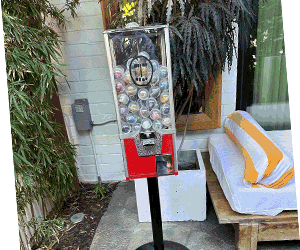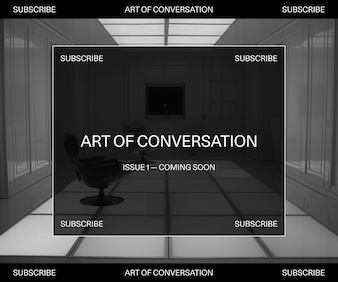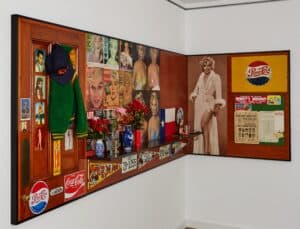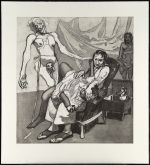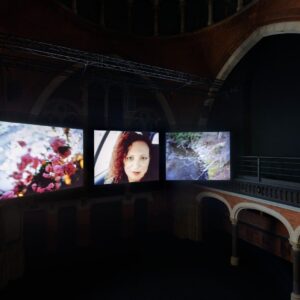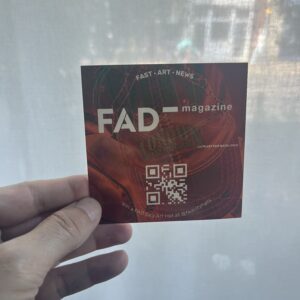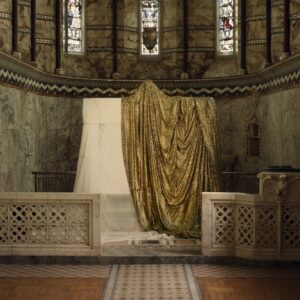Candida Stevens Gallery is presenting Blue Sky Red the largest solo exhibition of Veronica Smirnoff’s work to date in the UK.
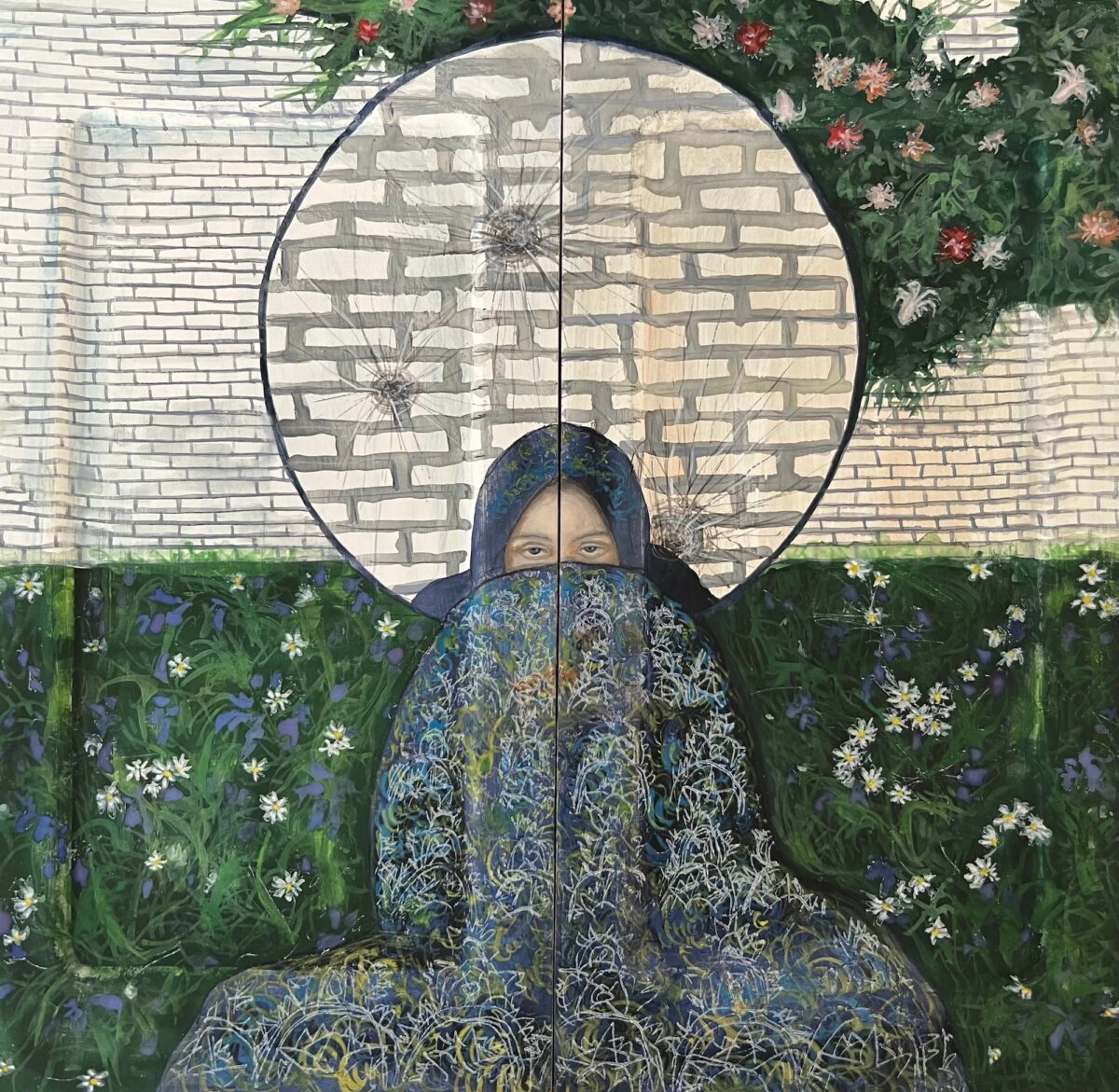
Blue Sky Red presents the latest series by British-based Russian-Born artist’s practice, featuring vibrant new paintings and drawings bursting with colour and confidence, such as Thinking Red (2024) portraying a female figure in a voluminous crimson dress. Doing away with the constraints of ‘high’ and ‘low subjects, Smirnoff blends the sacred and the profane, the sublime and earthly, pulling the viewer into a realm of magic and mystery, illusory and irresistible – guided by Smirnoff’s boundless imagination and ultimately by the paint itself.

The exhibition also includes three new, never-seen-before large-scale tapestries commissioned by the artist over the last year, translating her mesmerising visual language into the tactility of textiles. Each embroidery references a small panel painting by Smirnoff, digitally printed onto the fabric first, then embroidered by hand to explore sculptural and textural possibilities, while still employing an ancient artistic technique with its own long history rooted in collective storytelling.
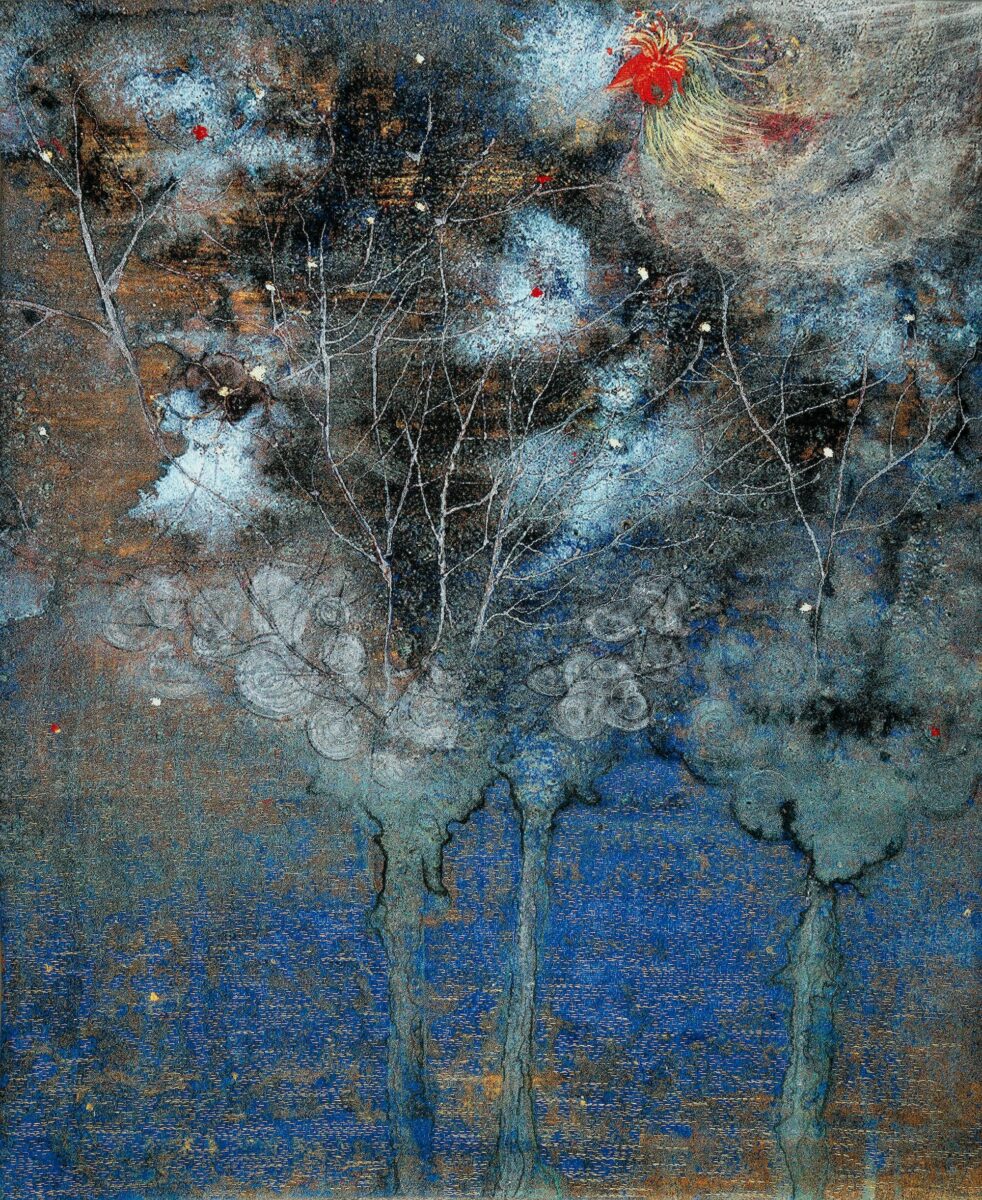
I managed to grab some time with Smirnoff ahead of the opening of the exhibition to ask a few questions about her practice and the
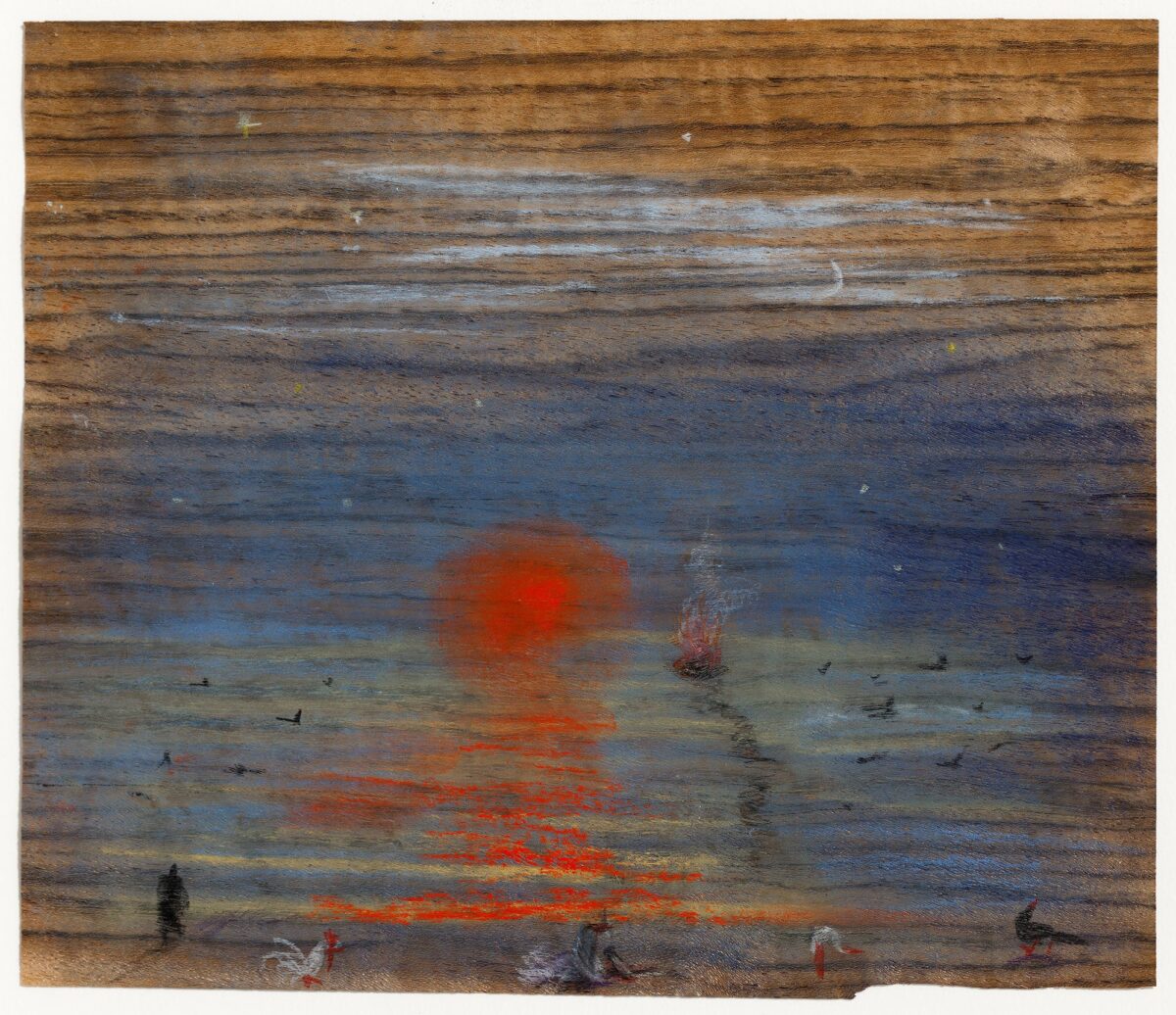
Having read about your practice and the processes you use to create your work it must be super important for you that people see your work in the flesh
It is very important for me that the work is seen in the flesh – I think the camera doesn’t always capture the essence and intricacies of the paintings and the result would end up feeling very different from the original, although good in its own right but yet very different from the physicality and marble like surface of the wooden panel and the way the luminous layers of egg tempera are perceived by the eye.
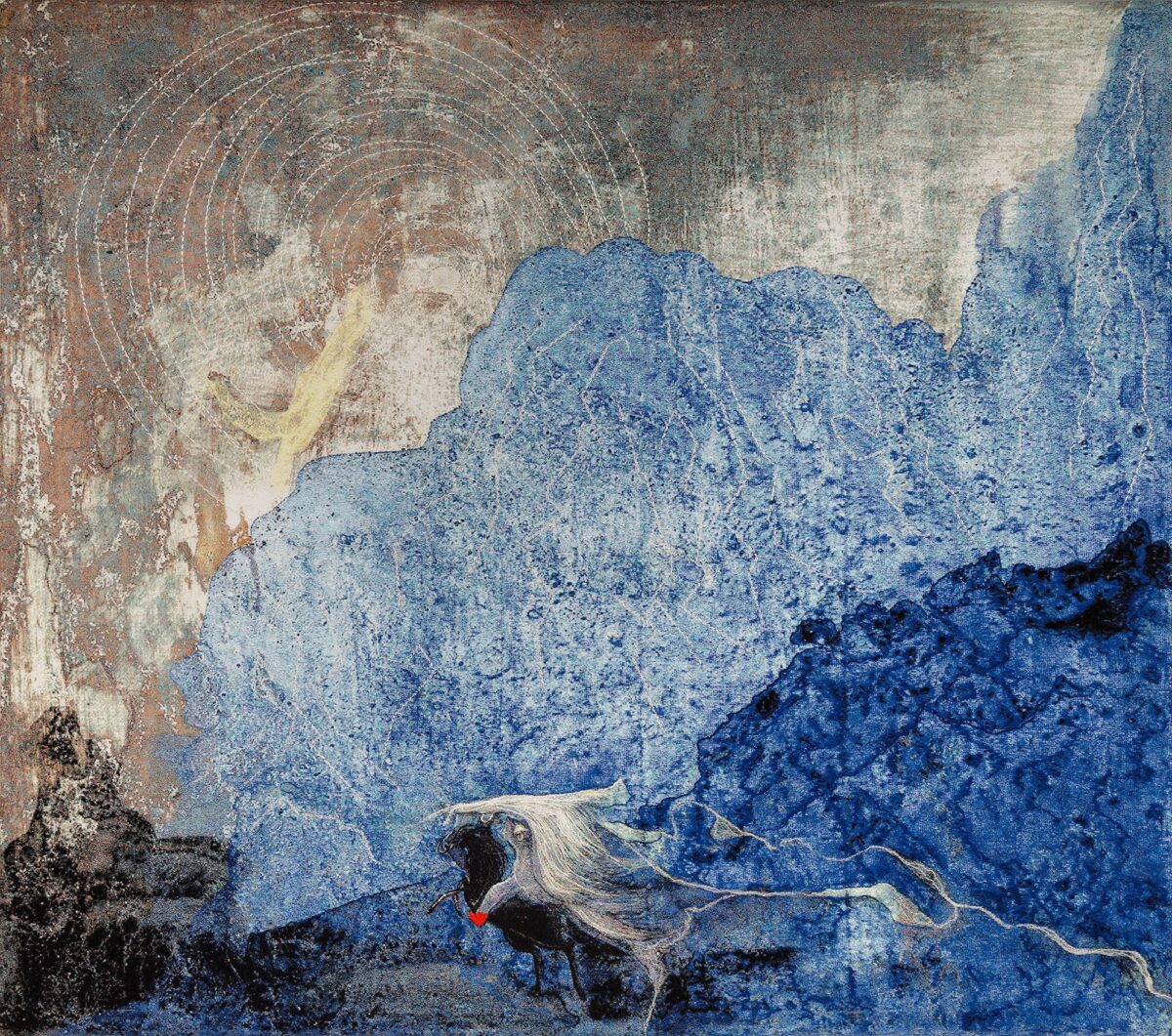
Your exhibition includes three new, never-seen-before large-scale tapestries, a new departure for you especially as some of the work was commissioned by you. Has it been an interesting process working in a new medium and with collaborators? Have you found out anything about yourself that was a surprise?
The tapestries have been a revelation- it’s incredible how there’s so much potential there in terms of creating new narratives superimposed onto the old ones, engendering depth and volume and transparency. I have never collaborated before and learned so much in the process. It has really informed my own practice and given me new ideas to explore in painting.
Your work references Russian custom and technique, what do you value about your heritage?
The work alludes to a very wide scope of references, including Asian visual culture, pre-renaissance art, Japanese prints, miniature painting and Byzantine iconography. My roots unerringly influence my work, but my practice is informed from elsewhere. I feel the abiding presence of art history allows for a playful interplay between intuition and appropriation, the old and the new.
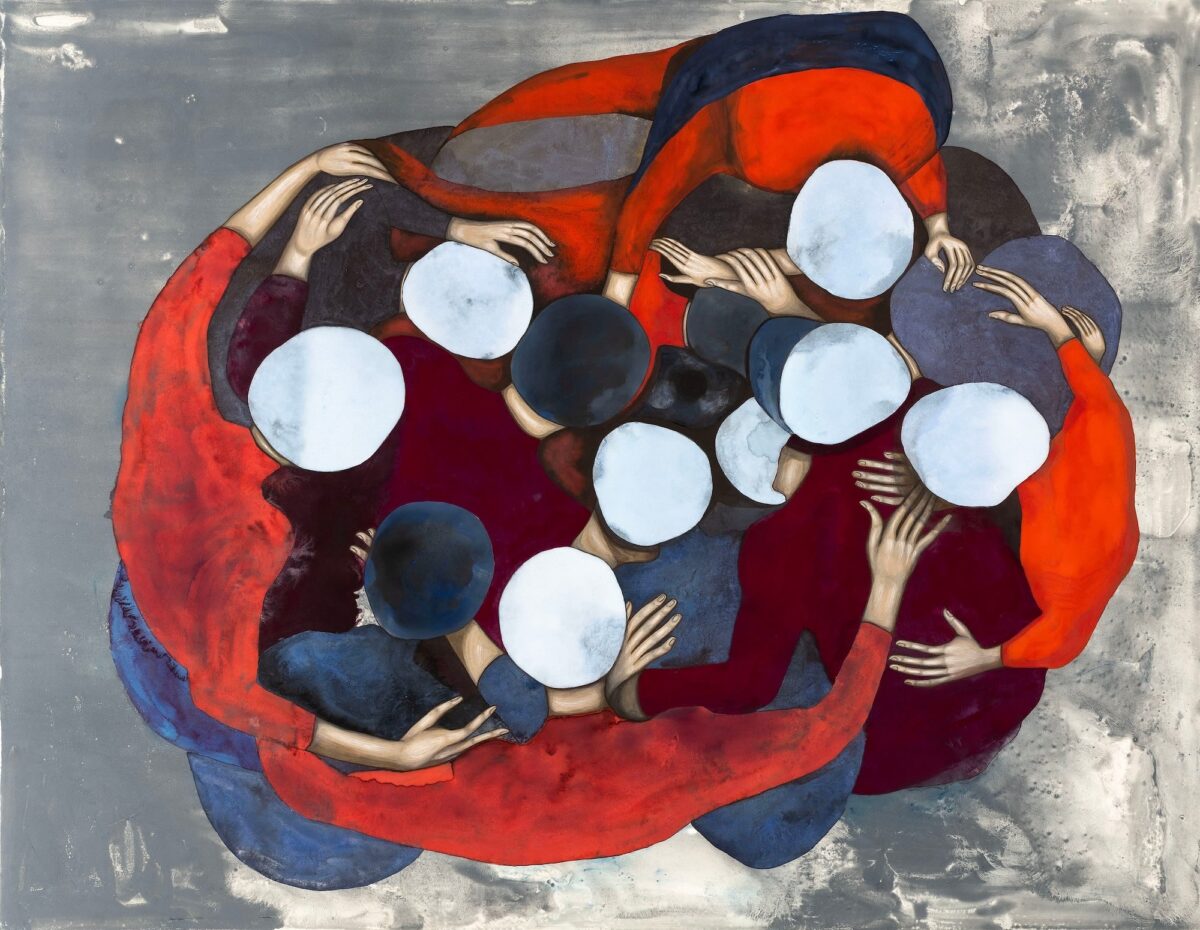
Over two decades, Smirnoff has become a master of egg tempera painting – a technique associated with Byzantine and pre-Renaissance art. She began to train in the ancient art-making method – widely practised until the 15th century when it was replaced with oil paint – while Smirnoff was a student at the Slade School of Art. But it was the Russian monks at the Optina Pustyn Eastern Orthodox Monastic centre, on the outskirts of Moscow, that helped Smirnoff finesse her skills in her chosen medium, studying how to grind precious stones to make her own pigment powder, a traditional process that is completed by adding white wine and egg yolk. The quick-drying egg tempera is then applied laboriously,
in thin layers, to gessoed wood panels; Smirnoff still sources the panels used for her paintings from the monastery, where they are made and blessed by the monks – adding a spiritual layer before the paint.
Smirnoff’s fascinating engagement with egg tempera and her careful choice of materials is the starting point for understanding her lucid, jewel-like paintings. Intimate in scale and rich in details and symbolism, Smirnoff draws on her own life experiences and memories, as well as a voracious range of cultural and political references, and taking inspiration from throughout art history, from Persian miniature painting to Japanese screens and Chinese scroll painting, to religious iconography and folklore.
Veronica Smirnoff, Blue Sky Red, 20th May to 26th May, presented by Candida Stevens Gallery at Cromwell Place, Gallery 12 & Wing Gallery
About the artist
Veronica Smirnoff is a British artist of Russian origin, (born Moscow, Russia, 1979). She earned a BA from the Slade School of Art and postgraduate diploma from the Royal Academy of Arts. She was awarded the Terence Cuneo Prize in 2004 and selected for the John Moores Painting Prize UK in 2010 and Women to Watch UK in 2009. She has exhibited internationally in Milan, Paris, Berlin, London, and New York. She currently lives and works in London.
